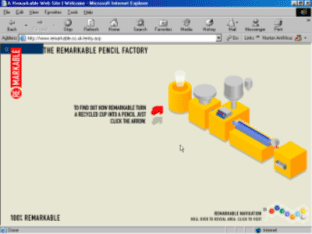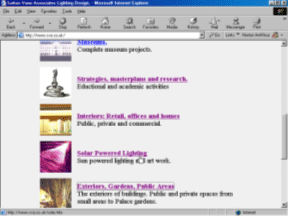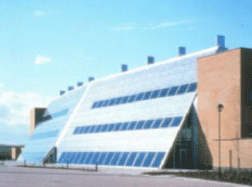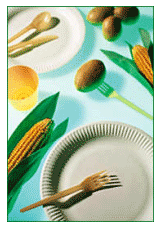Sustainable Design Awards Toolkit
Section 4.6 - Innovative redesign
"Extract what's positive from the past and turn it into something
sustainable for the future."
Redesign - Sustainability in New British Design, Michael Evamy
(The British Council, 001)
As designers we have a responsibility to aim to achieve sustainability
by reducing demand for energy and natural resources. The products in
this section all have achieved this to some degree and therefore should
all be used as inspiration for your future design work in years to come.
|

|
Britain throws away �4billion plastic cups
every year, enough to form a loop around the world 12 times!
With this in mind Edward Douglas Miller and his company 'Remarkable'
(www.remarkable.co.uk)
set out to sustain a longer lifespan for the plastic cup in
the age of Victor Papenek's so called 'Kleenex Culture'. A product's
life does not have to finish as a raw material, Remarkable have
proved that w practical and profitable to give a second
life to many products that would be previously thrown away after
a fairly non-efficient life. They took the discarded plastic
cup and turned it into a pencil. They now produce over a million
per year. This saves on rubbish in landfill sites and saves
trees. Remarkable are even turning car tyres into notepads and
mouse-mats, pencil cases and milk cartons into pens! For more
information you can check out the Remarkable website at the
above address. |
|
In the last few years it has become increasingly necessary to use products
or sources available to produce better products in every sense. Sutton
Vane Associates (www.sva.co.uk) have
produced a unique 'Tsola light' that does not deal in wires and dangerous
mains voltage but simply runs from daylight that is collected by its own
internal solar cell, which is then converted to electricity. The light
automatically switches on at dusk and off again at dawn, by recycling
daylight as an artificial light, SVA's product costs nothing to run and
more importantly saves energy.
|
 |
| � |
� |
� |

|
SVA are also working on a development
in Sunderland that illustrates how solar power can be integrated
into office architecture to take advantage of solar energy in
Britain. The idea is based around minimizing heat losses, using
the ing's mass to control the temperatures, use natural ventilation,
save energy consumption by maximizing natural daylight and producing
energy by using PV in the facades. Studio E and Akeler's Solar
Office includes a South-facing wall that features a photovoltaic
integrated facade. 45,000 cells together produce 73kW, that's
enough to run 300 PC's! Further information on SVA's projects
can be found at: www.sva.co.uk
|
| � |
� |
| Over 18,000 new airliners
will be needed in the next 20 years such is the demand on aircrafts
at present. If the majority of those are fitted with Rolls-Royce's
Trent engine then the skies will be a lot cleaner and a lot
quieter. The Trent engines are low on emissions, low on noise
and low on fuel consumption and so can be seen as the current
benchmark for new aircraft to follow. It includes a unique three-shaft
design that uses the latest in materials technology, infact
the Trent engine goes much further than current and proposed
legislation. It's lighter in weight and uses less fuel, therefore
surprise that in February of 2001 it had around 30 customers
ordering �12 billion worth of 1400 Trent engines! It only takes
a breakthrough in one field like this to make other companies
and their designers sit up and take notice, perhaps following
suit. More information on the 1400 Trent engine and Rolls-Royce's
latest strides forward in more sustainable transport can be
found at: www.rolls-royce.com
|
 |
| � |
� |
|
|
Baltic - The Centre for Contemporary Art in Gateshead can be seen as yet
another example of where a previous design, in this case an old 1950s
industrial ing, has been given another life. Opening in 2002, the
former Baltic Flour Mill, used for grain storage, occupied an unused prime
spot on the south bank of the Tyne River. �46m has been spent regenerating
its use and is now one of the largest temporary art spaces in Europe.
The Baltic will not hold a permanent collection but instead will house
invited artists' collections in a constantly changing medium. The
reopening of the Baltic will see not only job opportunities created
on the social side, but also energy consumption will be kept to a
minimum with its own energy centre that will convert its own natural
gases into heating and electricity for the ing. More information
on this can be found on either:
www.balticmill.com or
via www.gateshead-quays.com
|
|
|
 
 |
Inspirational Current Work
|
 |
�
|
 |
Toolkit Index


|
|

